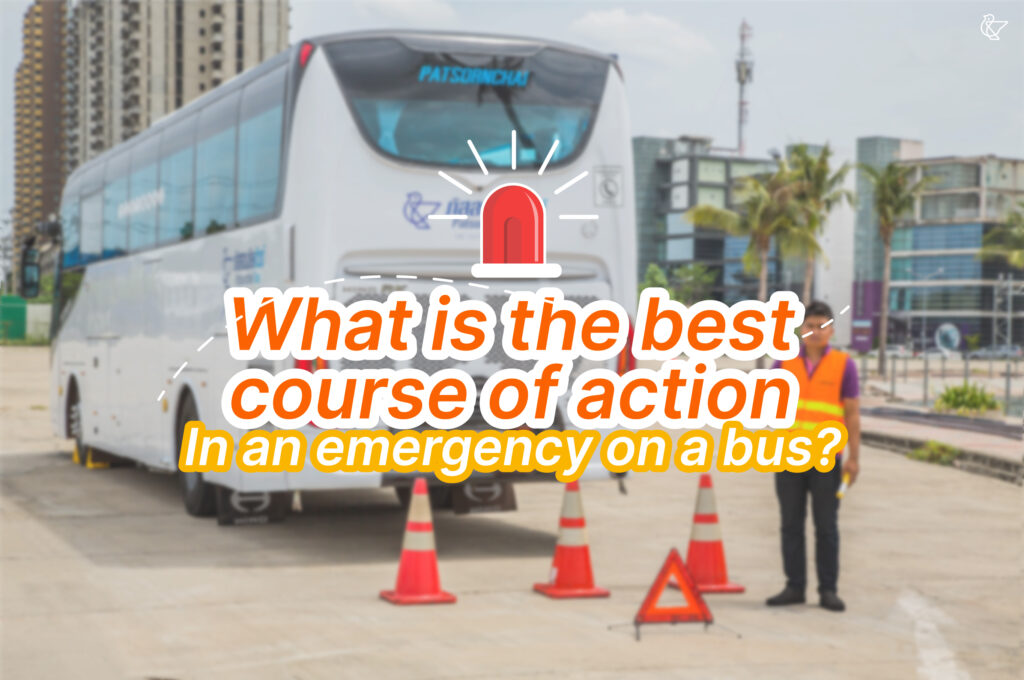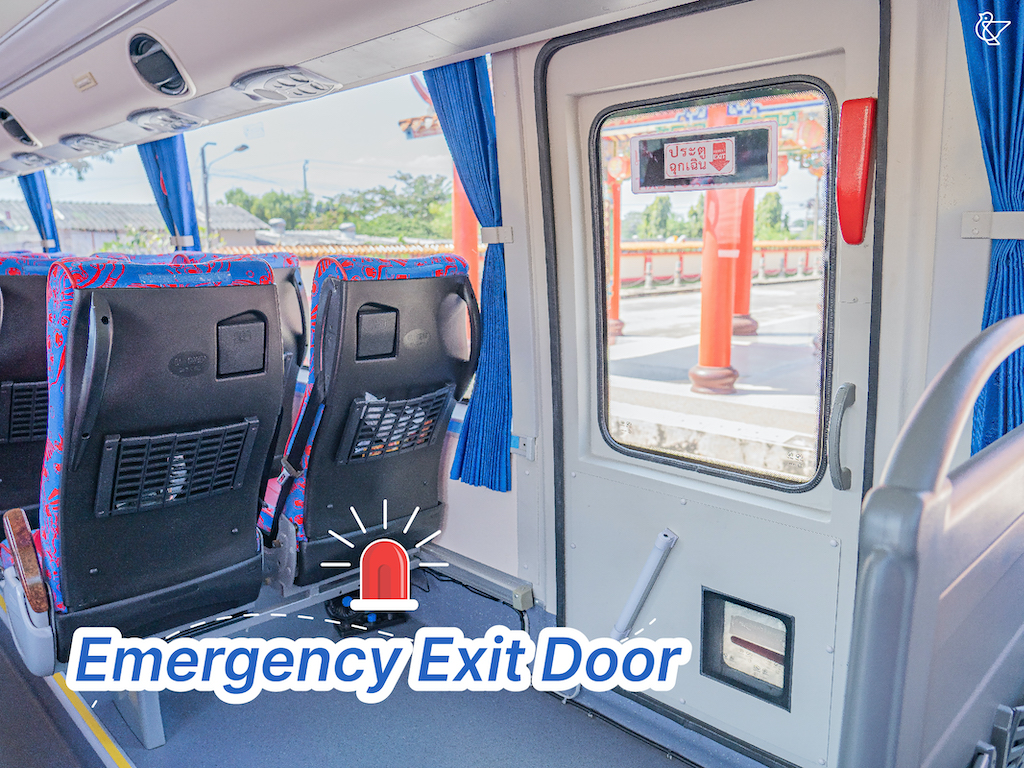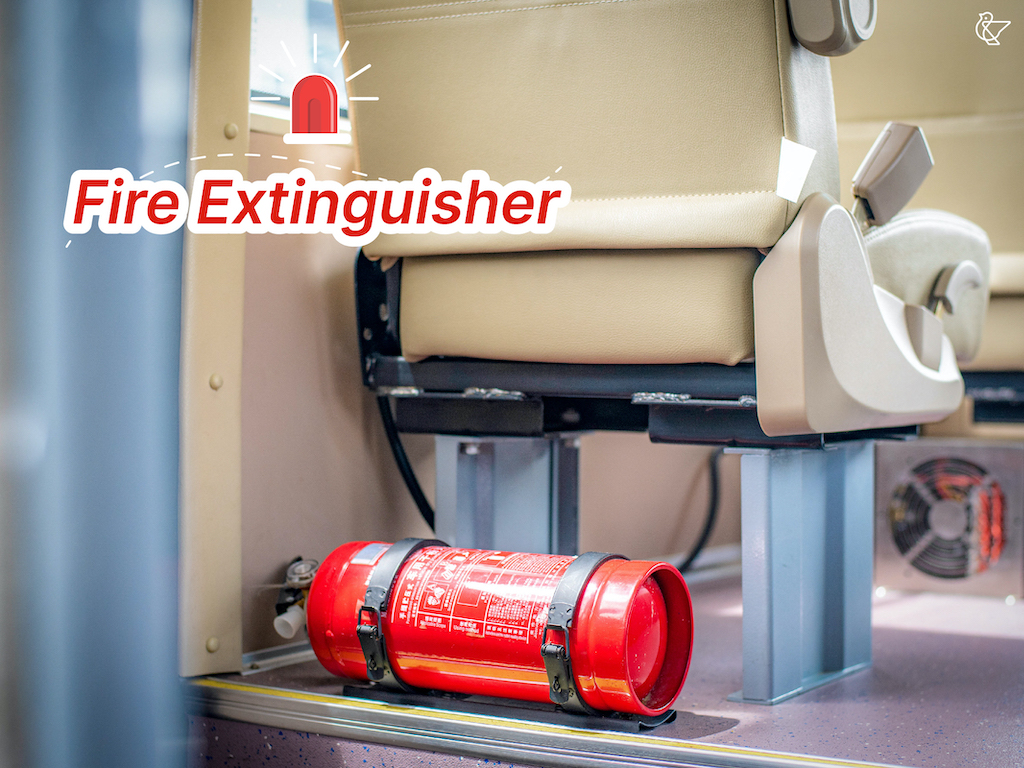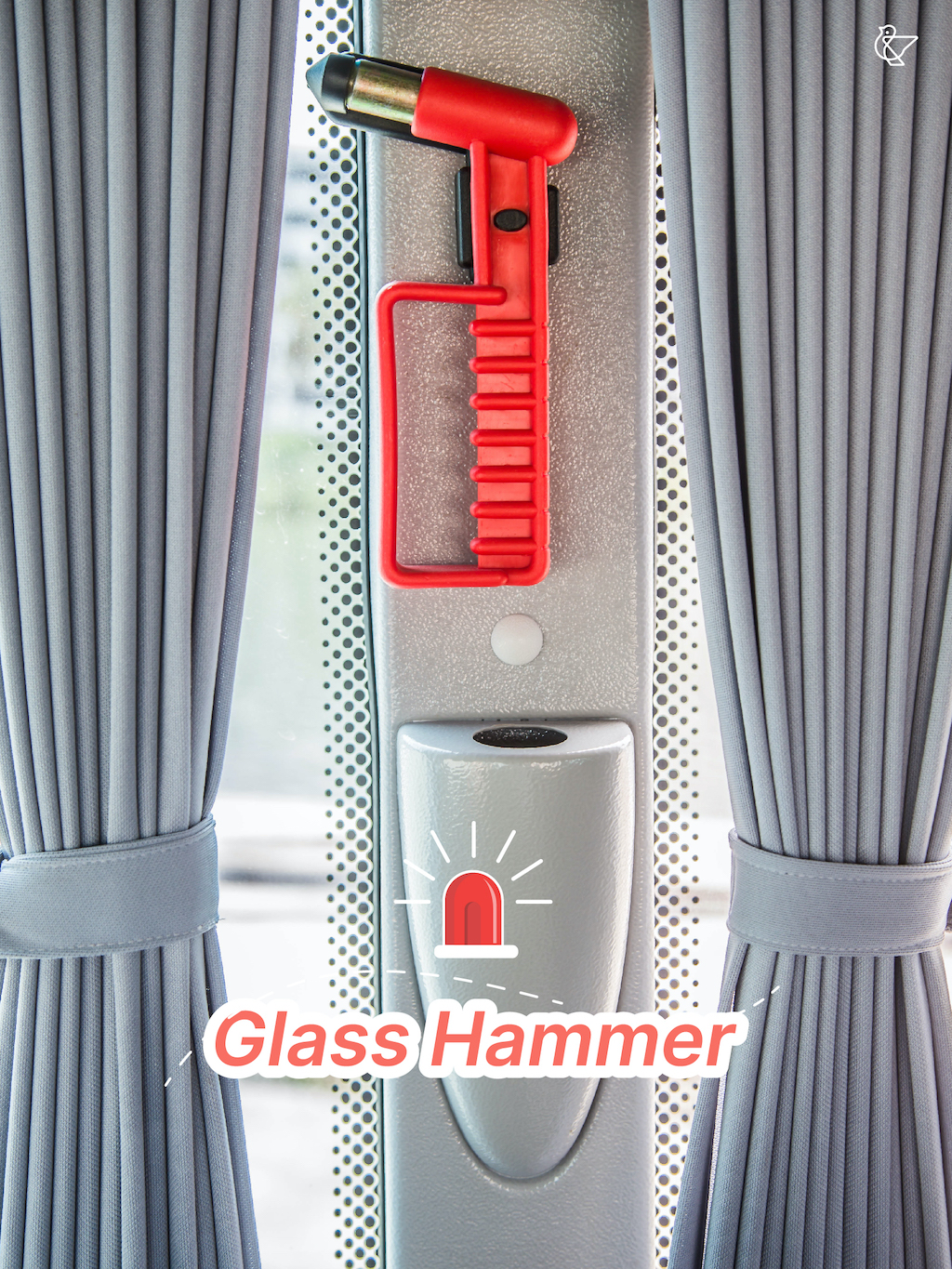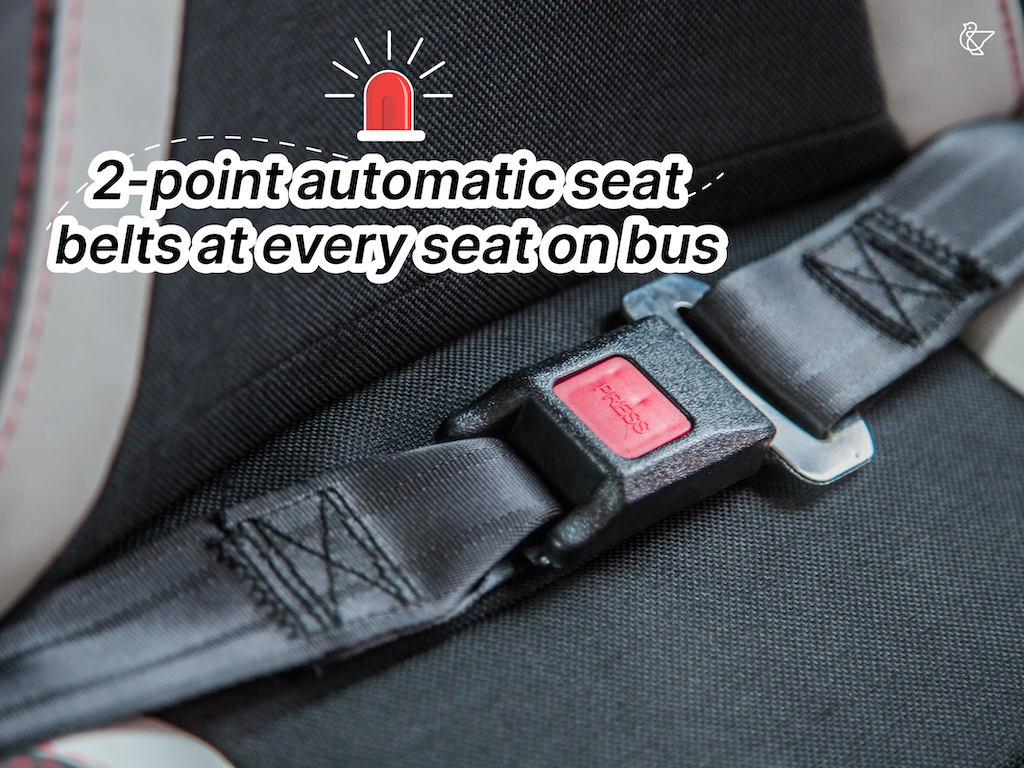The extremely unlikely event of an emergency is something nobody wants happening, nevertheless, “extremely unlikely” is not an impossibility, and thus we must be prepared should the worst occur. The focus of this article will the 3 key pieces of emergency equipment that every bus must come equipped with, and that the passenger should be made aware of before every trip: fire extinguishers, emergency doors, and glass breakers. These pieces of kit are potentially life saving, whether they are to put out a fire, or escape a trapped cabin, so it is important we educate ourselves about their purpose, use, and general location in the cabin.
It is in all likelihood that you have noticed them situated around the cabin before, and fortunately have never needed to use one, but would you know how to operate them, should the occasion arise? Let’s take this opportunity to explore these simple pieces of kit and how we can make the best use of them.
Emergency Exit Door
Let’s start with the emergency exit door. This is the first thing you should be looking out for every time you get on a bus as it will allow you to escape the bus in the event of an emergency, which should always be your first priority no matter the nature of the emergency. The emergency exit must, by law, be clearly indicated with a sign both inside and outside the vehicle; in reflective, red font; in Thai; with a size no less than 5 centimeters, situated above the area that the door opens out to, like the cabin ceiling, or around the frame of the door above the emergency exit.
But for buses that share a landing door and emergency exit door in the middle section of the bus, the emergency door must have a width of no less than 40 centimeters and a height of no less than 120 centimeters, located on the middle right side of the vehicle or towards the back as required by law. In the event of an emergency, all emergency doors must be operable without the use of any keys or external equipment, and the door must be able to fully open outwards. A last important point that is perhaps the most applicable: there must be no obstruction of the emergency door, temporary or otherwise, and this responsibility extends to the passenger as well: your belongings should never block the door in a manner that will make emergency use of the exit more difficult, or impossible. The biggest takeaway from this article would be to locate the emergency exits immediately upon embarking, and that your first course of action in an emergency should be to escape the cabin.
Fire Extinguisher
A fire extinguisher is another piece of emergency equipment that every bus must have in the extremely unlikely event of a cabin fire. Fire extinguishers are not meant to be a permanent solution to fires: they are designed to increase the time for passengers to exit the bus. Small 2-pound fire extinguishers are placed in at least 2 positions, one in the front seat near the driver, and one in either the rear seating, or in the middle of the cabin: the three most accessible areas of the cabin. In an emergency, passengers must use fire extinguishers as instructed on the label. Generally speaking, stand 6-8 feet from the fire, pull out the locking pin from the lever, disconnect the hose from the body, aim the nozzle at the base of the fire, and squeeze the lever, ensuring you smother the entirety of the flame with the flame retardant. It is worth reiterating 2 points: attack the base of the flame and not the flame itself to ensure the most effective use of the fire extinguisher, and that the fire extinguisher’s primary function is not to completely arrest control of a fire, but to give everybody more time to escape the cabin. Your first priority in a cabin fire should always be to escape the cabin, and smothering the flame is necessitated only if it makes escaping the cabin impossible.
Glass Hammer
The last piece of emergency equipment that every bus must have is a glass hammer, or maybe you have heard one of these referred to as a window breaker: a red-handled hammer with a round, protruding steel head. You’ll most likely see it situated near the window of the bus. The Department of Land Transport specifies the number of these hammers onboard, and the specific locations they must be situated in. The hammer is intended for cutting and breaking glass to open as an emergency exit, and they must have passed concentrated impact tests before being installed, so you can guarantee it can more effectively break window glass compared to less suitable alternatives. In the case of an emergency, simply remove it from its holster and facing the relevant window, cut, and then hit. Your first instinct is likely to hammer away at the glass immediately, but it is actually designed to cut the glass first, as this makes shattering the window significantly easier: press the hammer to the glass and cut with the motion of a knife, and then hammer on the cut you just made. This ensures a clean, effective break with minimal effort. Shattered glass is itself a hazard, so this method is only applicable when you have no other choice, like if leaving via emergency exit is impossible.
Other suggestions while traveling
In addition to the emergency equipment tips, Patsornchai Tour would also like to leave you some additional tips about safety when traveling with a rented bus that passengers should know about.
- Choose a reliable travel company. There should be a thorough vehicle check every time before departure, and the company should have no history of serious accidents. This can be checked with the Department of Land Transport.
- There must be, at minimum, 2-point automatic seat belts at every seat, but preferably with better seat belts.
- While traveling, passengers should remain vigilant and observe tell-tale signs of the driver such as intoxication, frequent yawning, or reckless driving. If you suspect anything is seriously amiss, inform a police officer, notify authorities at Department of Land Transport checkpoints, or your bus company representative.
- If the journey is more than 400km, the bus company must provide 2 drivers to alternate driving to prevent fatigue, or enforce a mandatory break every 4 hours for at least 30 minutes. In addition, the driver should be courteous and polite to the passengers, and the passengers should respond in kind to ensure the smoothest journey possible.
All the tips and recommendations thus far should add to your peace of mind when traveling, especially now that you are fully prepared in the unlikely event of an emergency. We at Patsornchai Tour believe comfort and convenience are necessary for a pleasant journey, but we believe your safety is just as, if not more important. If you are interested in renting a bus for group travel, like a student vacation, family trip, or company trip, we would be more than happy to accommodate you. Our clients include both the private and public sectors, whether it be for seminars or events, and we are consistently praised for our attention to detail, and our safety guidelines are particularly stringent.
Contact Us
- If you are interested in a bus rental, a group vacation, or a school outing, you may contact us at
- Tel. 02-537-8881
- LINE : @bkkjob
- Email : [email protected]
- Address 7/391 Soi Vibhavadhi-Rangsit 19, Vibhavadhi-Rangsit Road, Chatuchak, Chatuchak, Bangkok 10900

